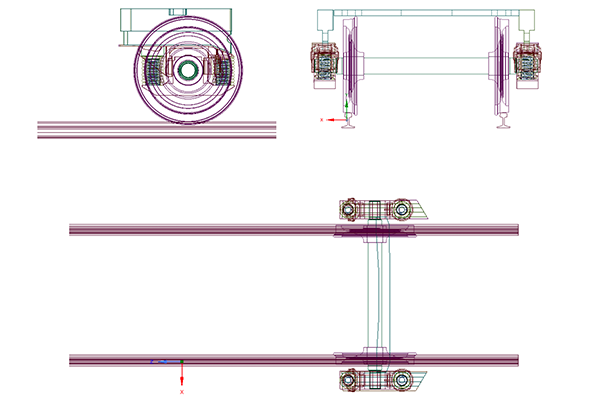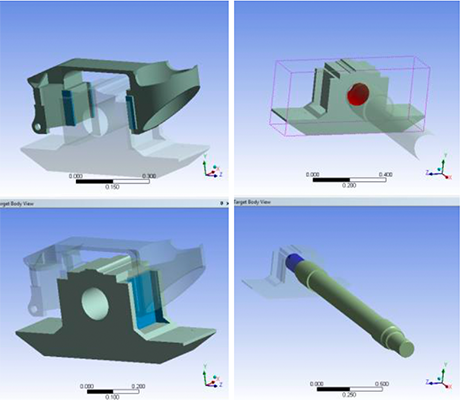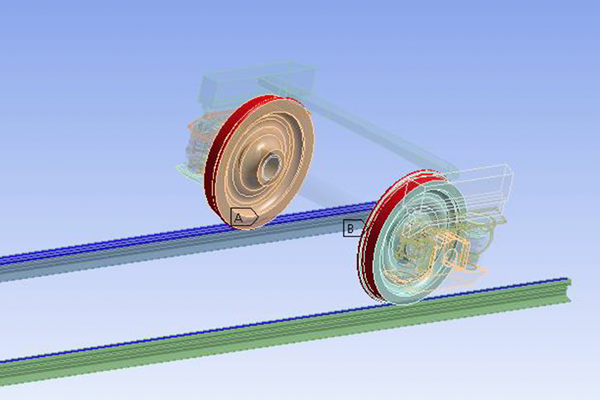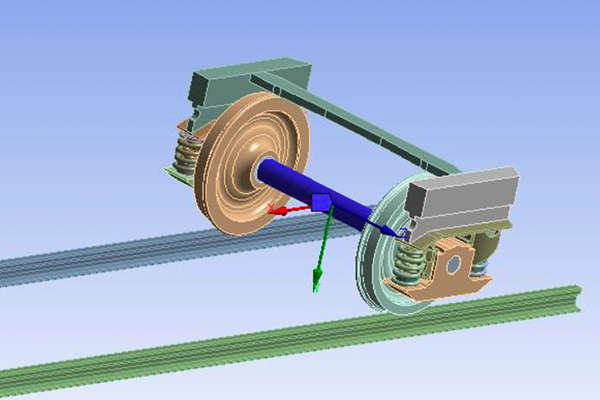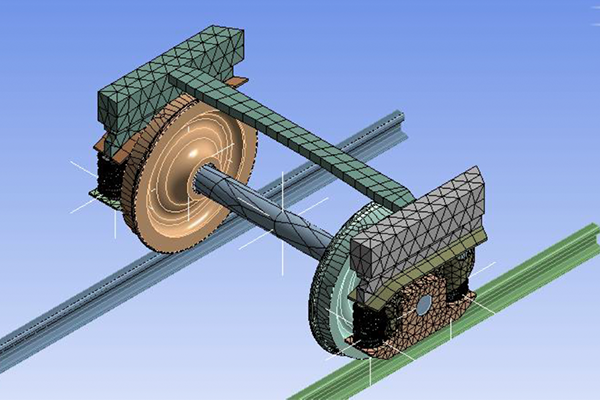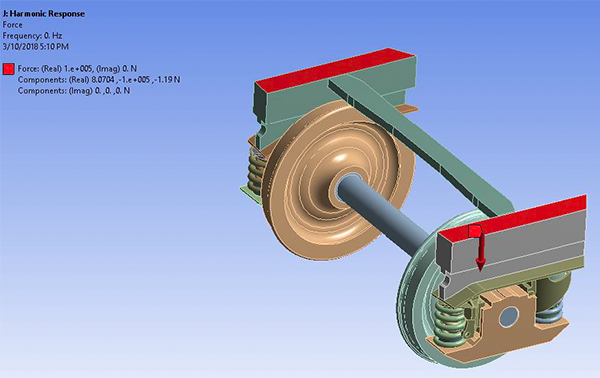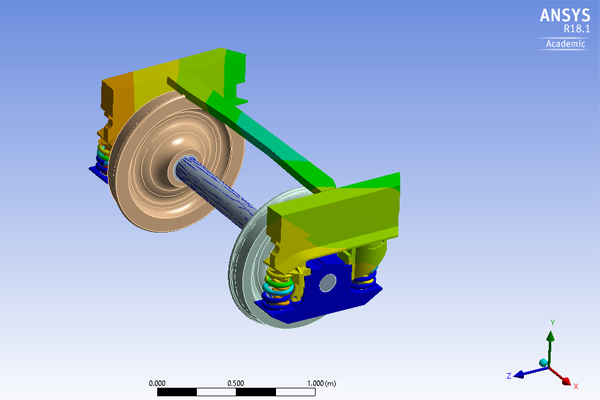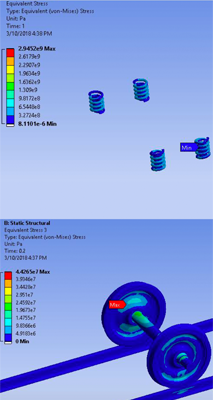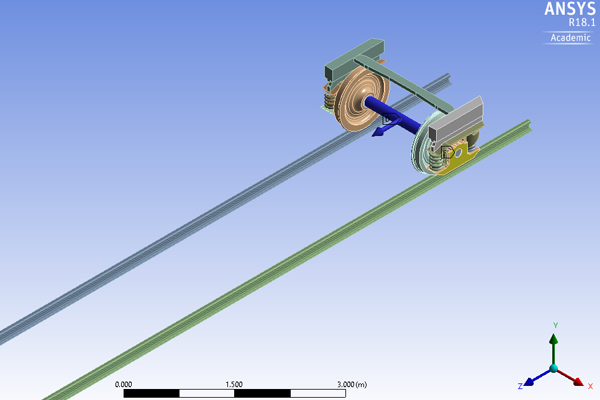Simulating structural health
Civil engineers are using ANSYS software to monitor infrastructure systems.
Infrastructure is in need of a makeover—we see it in the news as stories of bridges, roadways, water systems, and railways crack and crumble. At Carnegie Mellon University, the work of researchers across many disciplines is intersecting to create technologies that will improve and extend the life of transportation infrastructure.
Researchers in the Department of Civil and Environmental Engineering (CEE) are leaders in indirect structural health monitoring, a low-cost and low-maintenance monitoring approach where moving vehicles use sensors to indirectly sense roadways, railways, and bridges while traveling their normal routes.
Jingxiao Liu, a CEE Ph.D. student advised by professors Mario Berges and Hae Young Noh, is using ANSYS simulation software to model how a track geometry train car moves and collects data. The project is a collaboration between Berges, Noh, CEE University Professor Emeritus Jacobo Bielak, Department Head of Electrical and Computer Engineering Jelena Kovačević, and Dean of the College of Engineering Jim Garrett.
The value of this software is that we can make our simulation approximately realistic to the real-world model, and well-understand the train-track interaction system.
Jingxiao Liu, Ph.D. student, Civil and Environmental Engineering, Carnegie Mellon University
Track geometry is the measurement of a track system in three dimensions. The simulation models track parameters for a light rail system to predict when the railway’s health is degrading and is in need of repair, or when the geometry indicates a dangerous situation that could cause a derailment. Currently, the track geometry car runs once or twice a year to collect data through a partnership with the Port Authority of Allegheny County. Ideally, the car would constantly run to collect data, but the car is expensive to run and maintain. The predictive model provides a complementary way to continuously monitor infrastructure systems.
“We have a simpler mathematical model, but we are trying to solve this problem by a physically-guided data-driven approach, which needs instructions from physical insights of the train-track interaction system and a good statistical inference from the data. This is why the ANSYS software is so valuable,” says Liu.
Liu’s current project, a bogie-track interaction system, simulates a bogie (or wheel and axle system) accelerating over a railway.
The model predicts railway health based on previously recorded data by allowing the researchers to test physical aspects of the bogie-track system. While they cannot change the parameters on the actual physical track, they can change any parameters on the model. Testing the effects of different parameters informs when part of the track may have a problem. Rather than waiting until a disaster is imminent, they can use that information to do maintenance on the track.
To simulate how the system moves along the track, they conduct finite element analysis, which studies the forces applied to its different elements and the resulting deformations. This helps the researchers understand how the system behaves physically under different pressures and situations. Once finite element analysis is completed, the final step is transient structural analysis, in which the system is analyzed as it’s in motion.
“The value of this software is that we can make our simulation approximately realistic to the real-world, and well-understand the train-track interaction system,” said Liu.
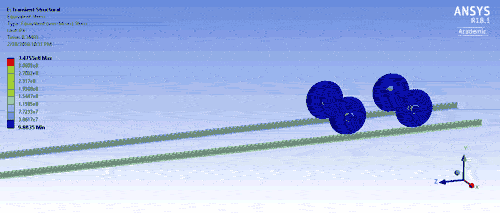
Source: Jingxiao Liu/ANSYS
An example of transient structural analysis
The team is also investigating how to use acceleration data from vehicles on roads and bridges for similar purposes. Using data from previous experiments, they are developing a track geometry prediction algorithm inferred from the finite element model to predict a structure’s future health.
“Our task is to improve the model, to make it robust to environmental factors and other influences,” says Liu. “That's a lot less expensive than the track geometry car. We are trying to improve the monitoring of the huge railway network or even the infrastructure network with lower cost, less employee exposure, and more robustness, and reduce incidents and accidents, such as derailments.”
This project is supported by the National University Transportation Center Mobility21 at Carnegie Mellon. Mobility21 is a member of the university’s Metro21: Smart Cities Institute, which seeks to research, develop, and deploy solutions to improve the quality of urban life.

